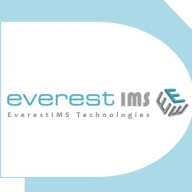

DX Unified Infrastructure Management and Infraon IMS are two competing infrastructure management solutions. Infraon IMS appears superior due to its robust features, making it worth the price despite DX Unified Infrastructure Management having advantages in pricing and support.
Features: DX Unified Infrastructure Management offers comprehensive monitoring capabilities, flexibility, and wider customizability. Infraon IMS provides intuitive design, advanced automation options, and integrated, user-friendly automation tools.
Room for Improvement: DX Unified Infrastructure Management needs a simpler setup process, reduced configuration complexity, and a less steep learning curve. Infraon IMS requires better documentation, more integration with third-party tools, and addresses user feedback for improved documentation.
Ease of Deployment and Customer Service: DX Unified Infrastructure Management's deployment is time-consuming, but customer support is highly responsive and helpful. Infraon IMS offers a smoother and faster deployment experience, though users feel customer support could be more proactive.
Pricing and ROI: DX Unified Infrastructure Management has a lower setup cost and shorter ROI period. Infraon IMS is more expensive to set up but delivers a higher long-term ROI due to its feature-rich platform.
| Product | Market Share (%) |
|---|---|
| DX Unified Infrastructure Management | 0.5% |
| Infraon IMS | 0.2% |
| Other | 99.3% |


| Company Size | Count |
|---|---|
| Small Business | 29 |
| Midsize Enterprise | 20 |
| Large Enterprise | 80 |
| Company Size | Count |
|---|---|
| Small Business | 3 |
| Midsize Enterprise | 2 |
| Large Enterprise | 3 |
DX Unified Infrastructure Management is the only solution that provides an open architecture, full-stack observability and zero-touch configuration for monitoring traditional data center, public cloud, and hybrid infrastructure environments.
Designed to ensure an optimal end-user experience, this solution provides a modern HTML5 operations console that makes it easy and fast for today’s IT teams to implement, use, and scale – leading to faster time to value.
Infraon IMS offers network monitoring with real-time dashboards, customizable GUIs, and integrated tools, supporting device management and workflow automation efficiently.
Infraon IMS delivers stable performance with features tailored for easy customization and detailed network management. Users benefit from real-time monitoring through role-based dashboards and integrated ticketing tools. However, improvements in reporting, GUI usability, and AI integration are needed. Challenges include monitoring non-IPBS devices and improving connectivity visibility. Users require seamless Infraon Desk integration, ease of device addition, and enhanced topology views.
What are the key features of Infraon IMS?In industries like IT infrastructure and data center management, Infraon IMS is utilized for network monitoring and managing key components such as leased lines and firewalls. Its capabilities aid diverse geographical locations in overseeing data centers, offering centralized monitoring and access to critical infrastructure.
We monitor all Network Monitoring Software reviews to prevent fraudulent reviews and keep review quality high. We do not post reviews by company employees or direct competitors. We validate each review for authenticity via cross-reference with LinkedIn, and personal follow-up with the reviewer when necessary.